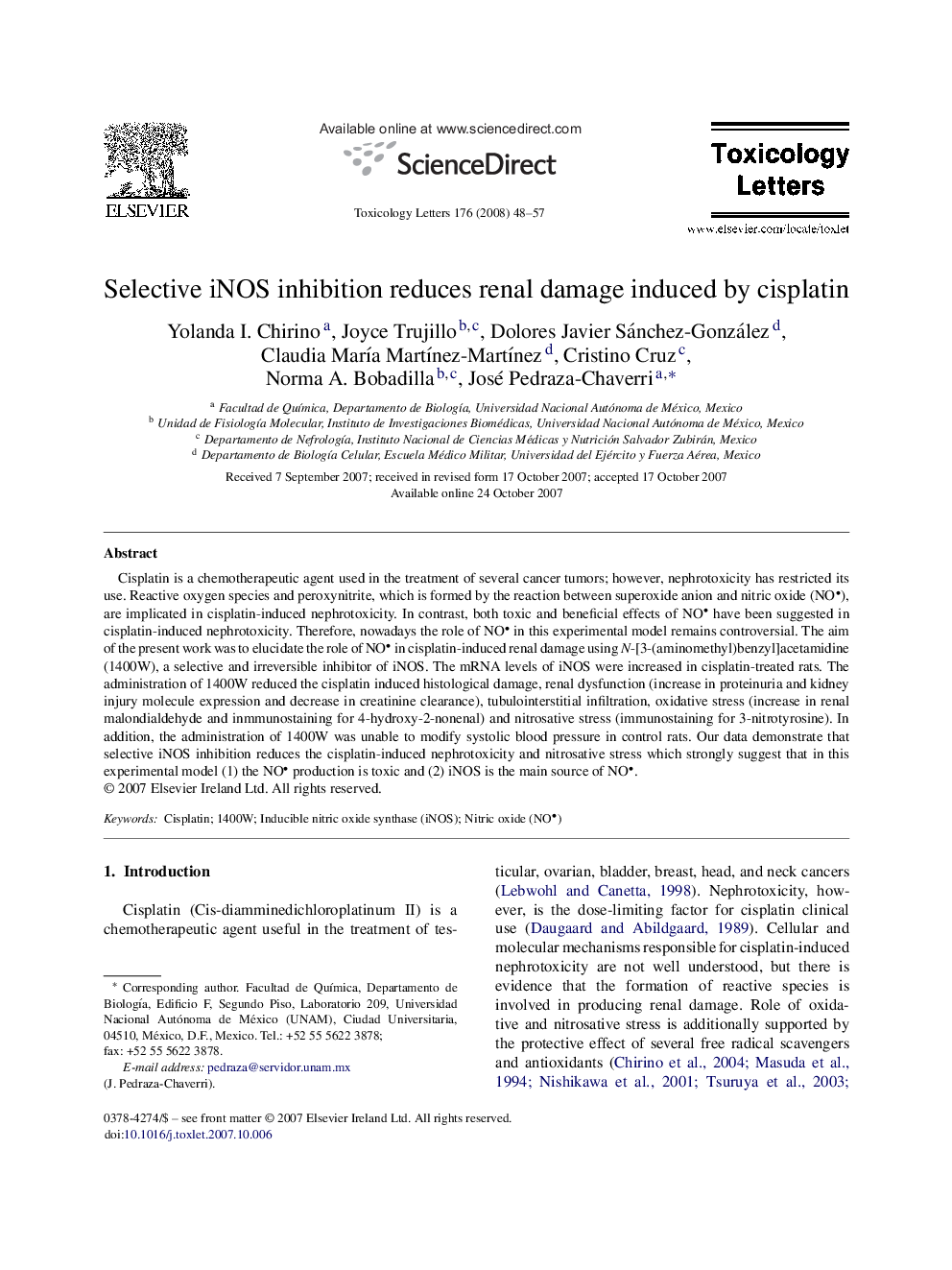| Article ID | Journal | Published Year | Pages | File Type |
|---|---|---|---|---|
| 2601786 | Toxicology Letters | 2008 | 10 Pages |
Cisplatin is a chemotherapeutic agent used in the treatment of several cancer tumors; however, nephrotoxicity has restricted its use. Reactive oxygen species and peroxynitrite, which is formed by the reaction between superoxide anion and nitric oxide (NO), are implicated in cisplatin-induced nephrotoxicity. In contrast, both toxic and beneficial effects of NO have been suggested in cisplatin-induced nephrotoxicity. Therefore, nowadays the role of NO in this experimental model remains controversial. The aim of the present work was to elucidate the role of NO in cisplatin-induced renal damage using N-[3-(aminomethyl)benzyl]acetamidine (1400W), a selective and irreversible inhibitor of iNOS. The mRNA levels of iNOS were increased in cisplatin-treated rats. The administration of 1400W reduced the cisplatin induced histological damage, renal dysfunction (increase in proteinuria and kidney injury molecule expression and decrease in creatinine clearance), tubulointerstitial infiltration, oxidative stress (increase in renal malondialdehyde and inmmunostaining for 4-hydroxy-2-nonenal) and nitrosative stress (immunostaining for 3-nitrotyrosine). In addition, the administration of 1400W was unable to modify systolic blood pressure in control rats. Our data demonstrate that selective iNOS inhibition reduces the cisplatin-induced nephrotoxicity and nitrosative stress which strongly suggest that in this experimental model (1) the NO production is toxic and (2) iNOS is the main source of NO.
